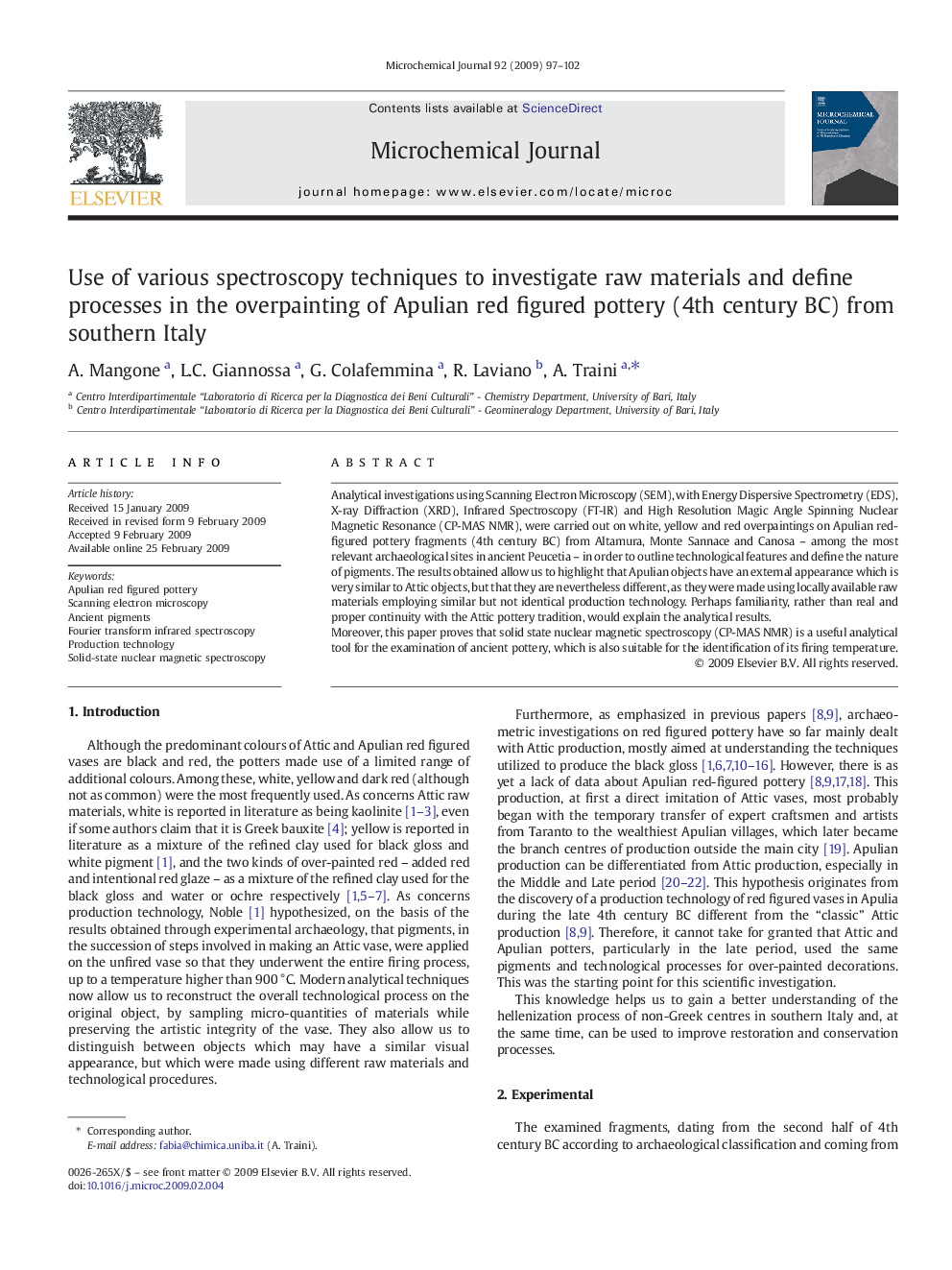| Article ID | Journal | Published Year | Pages | File Type |
|---|---|---|---|---|
| 1228570 | Microchemical Journal | 2009 | 6 Pages |
Analytical investigations using Scanning Electron Microscopy (SEM), with Energy Dispersive Spectrometry (EDS), X-ray Diffraction (XRD), Infrared Spectroscopy (FT-IR) and High Resolution Magic Angle Spinning Nuclear Magnetic Resonance (CP-MAS NMR), were carried out on white, yellow and red overpaintings on Apulian red-figured pottery fragments (4th century BC) from Altamura, Monte Sannace and Canosa – among the most relevant archaeological sites in ancient Peucetia – in order to outline technological features and define the nature of pigments. The results obtained allow us to highlight that Apulian objects have an external appearance which is very similar to Attic objects, but that they are nevertheless different, as they were made using locally available raw materials employing similar but not identical production technology. Perhaps familiarity, rather than real and proper continuity with the Attic pottery tradition, would explain the analytical results.Moreover, this paper proves that solid state nuclear magnetic spectroscopy (CP-MAS NMR) is a useful analytical tool for the examination of ancient pottery, which is also suitable for the identification of its firing temperature.
